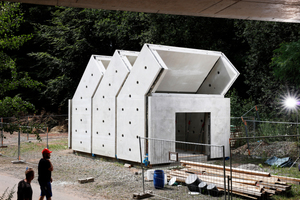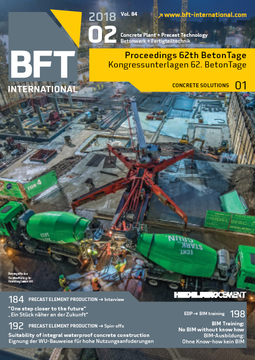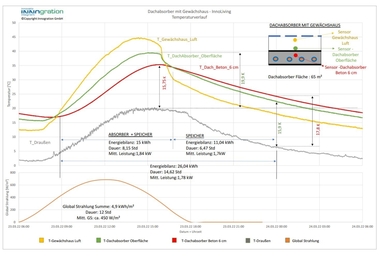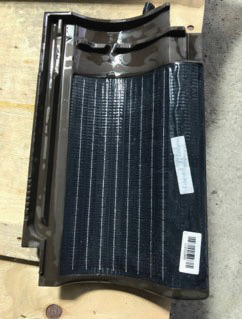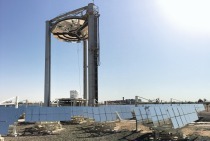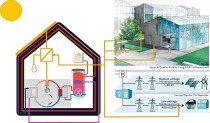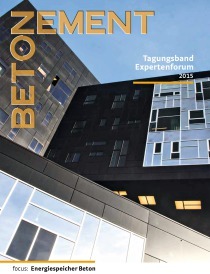Multifunctional precast elements
The amount of energy generated from renewable sources is fluctuating and thus uncontrollable, which is why it must be stored in the building to ensure effective utilization. At the core of such building-integrated heat storage systems is usually a water tank. Buffer storage units need to provide a sufficiently large volume, i.e. normally several cubic meters, to increase the share of renewable sources in total heat consumption. However, a water tank is not the only option to store heat since the building’s load-bearing structure itself also provides this capability.
Solid structural components are heavy and provide high thermal conductivity and high specific heat storage capacity. They are thus an appropriate means of storage. As a result, the building’s load-bearing structure is suitable for storing solar heat. Building-integrated tube registers enable both structural and non-structural components, such as walls, floors and ceilings, to actively contribute to heat storage. Building components thus no longer fulfil only a structural function but also serve energy-related purposes, such as heat generation, insulation and storage as well as temperature control. Besides the thermal benefits, the development step from mono- to multifunctional components enables adjustment to the dynamic requirements profile of building users whilst creating an increasingly sustainable building structure.
The research project on a “Large-Scale Demonstrator – Multifunctional Precast Elements to Enable Utilization of Load-Bearing Structures for Energy-Related Purposes” (Project Ref. SWD-10.08.18.7-15.51) aims to develop a building energy concept to efficiently utilize energy from renewable sources with the aid of multifunctional precast elements. The Smallhouse IV demonstrator building is being developed and constructed to complement thermal building simulations in order to investigate the thermal behavior of structural components under real-life conditions. Smallhouse IV should maximize the utilization of local solar heat, similar to the energy concept of active solar houses. However, solar heat is stored in the building structure itself, rather than in large water tanks.
The Smallhouse IV large-scale demonstrator has been designed to enable replacement and testing of individual innovative structural elements and system components under in-service conditions. This approach aims to investigate the impact of environmental factors, multifunctional structural components, and building systems and controls on user comfort and efficiency.

